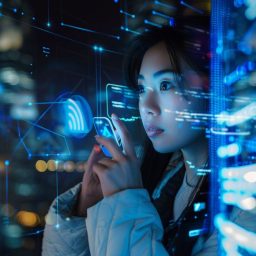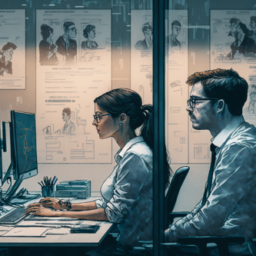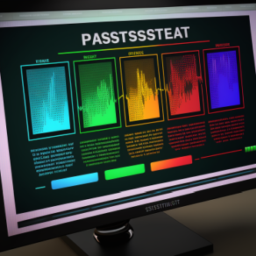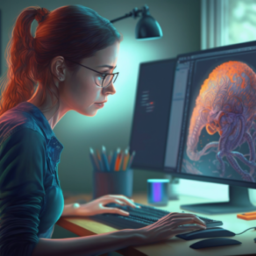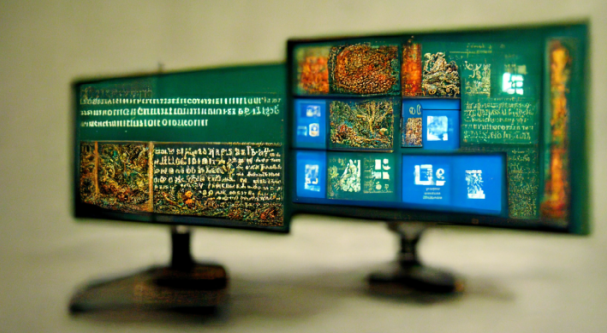
OCR is a technology that automatically extracts data from documents. It can reduce human error and improve accuracy. Its accuracy ranges from 60% to 85%, but some advanced OCR solutions can achieve as high as 99%.
Compared to manual data entry, which is slower and inefficient for many businesses, OCR is highly accurate and reduces human error.
Contents
Text recognition
OCR is an image-to-text conversion process that converts images of text into machine-encoded text. This process is able to recognize text in many formats, including documents, scene photos, and text that is superimposed on images. Some common applications include the conversion of scanned documents, a variety of scenes, and subtitle text superimposed on an image.
OCR uses the principle of feature extraction to recognize text. This process works by analyzing an image and identifying light and dark parts. It then identifies the character within it by comparing it to features in a library. The process is then completed with data correction to ensure accuracy. This step is essential in helping a computer recognize and understand text.
When analyzing scanned documents, it is important to consider the type of document. A typewritten document that has high contrast between the print and the page is much more likely to be recognized correctly by OCR than a document that is not typewritten. The quality of the original printout will also have an impact on the accuracy of the process. Folds and dirty marks can make it difficult for the system to recognize the correct letter or word.
OCR is an important tool for businesses that are looking to enhance the customer experience. With the right tool, businesses can boost the customer experience and reduce fraud. In addition, OCR solutions can also make onboarding new customers more agile and smooth. It is also helpful for tackling the issue of document fraud.
Feature detection
Feature detection in OCR programs is a technique that enables a computer to recognize specific characters on a document. It works by comparing the characters in the scanned document with those in the image file, and applying rules to recognize them. Features such as the number of diagonal lines, crossed lines, curves, and more help identify a character. For example, a capital letter “A” is stored as two diagonal lines and a horizontal line in its middle, and an ASCII code is generated to enable further manipulation.
A good OCR program will learn to identify each character, allowing it to recognize any font. Most fonts share similar features and are easily recognized by OCR programs. In addition, feature detection can increase the accuracy of recognition. The more features an OCR program recognizes, the more likely it is to identify the character.
OCR algorithms are also influenced by the image pre-processing steps that the image goes through. For instance, removing noise from the image and improving the contrast between the text and background is important for accurate recognition. A common way to pre-process an image before applying an OCR algorithm is to convert it to black-and-white. Then, the software analyzes the document and looks for areas that are light and dark. These areas are the characters that the program will process.
The process of OCR has two main parts: text detection and text recognition. During the process of converting an image to an electronic format, OCR software detects the text inside the image. It can recognize both handwritten and printed texts. In addition to this, it can also recognize photographs and natural scenes.



Application-oriented OCR
A popular application for OCR is mobile marketing, where marketers use codes to engage customers. By typing in the code, consumers can get a free product or get a discount. OCR is a powerful tool for such marketing campaigns because it can be integrated into existing apps and eliminates the barrier of typing the number or registration information into an app. It also reduces the need for online registration or typing in the code repeatedly.
Banks are among the most common companies to use OCR. These companies use the technology to increase transaction security and risk management. They can also use it to scan important customer documents. One example is an IBAN, a unique code that identifies bank accounts across national and international boundaries. Banking apps that integrate OCR software can scan this number for further transaction processing.
Major OCR technology providers have been tweaking their systems to deal with specific input. By taking into account business rules, standard expressions, and color images, these systems can deliver better performance and accuracy. These custom-made digitization methods are known as Application-Oriented OCR. They are commonly used on documents like license plates, driver’s licenses, and invoices.
Other applications for Application-Oriented OCR include text analytics and data entry. The software allows users to automate data entry for documents and post content to the Internet. It also allows for easy conversion of business documents from hard copy to digital format. The resulting text can be edited, formatted, and searched. It can also be used to automate tasks such as sorting letters before mail delivery or electronic deposit of checks.
The technology has advanced a great deal and now allows organizations to streamline their processes. It allows for automated document-based workflows and reduces errors. It helps companies save time and resources by transforming documents from analog to digital format. In addition, it also increases productivity.
Limitations of traditional OCR
Conventional OCR software has many shortcomings, such as low accuracy. This process is often unreliable, and the lack of accuracy is a major problem. However, multiple OCR frameworks can overcome these shortcomings, and can offer an end-to-end solution to the problem. These frameworks allow for high-quality text recognition, without the limitations that come with traditional OCR.
One major limitation of traditional OCR is that it isn’t always able to recognize individual lines of text. Organizations that require the verification of customer identity often use OCR as a way to automate these processes. It also allows for the identification of duplicate receipts, which saves time and money.
Conventional OCR is also unsuitable for documents that are not structured. For example, accounts payable OCR can’t read handwritten documents. And some platforms can only read the first alphabet in a line and can’t identify different font sizes. Moreover, many traditional OCR solutions don’t recognize tables that contain multiple columns and rows of text, and they don’t recognize lines that are bordered.
The next generation of OCR solutions is powered by AI and Machine Learning. AI-based solutions can make sense of data and convert it automatically. These solutions don’t depend on templates or rules and are more affordable and scalable. Intelligent document processing is a better option for businesses and is more accurate than traditional OCR. However, it can still be expensive. A new technology called “Intelligent Document Processing” (IDP) is on the way.
Traditional OCR systems are limited in their ability to recognize use-by-date from images. These systems are not designed for complex images or varying background colors. They are also limited when it comes to detecting a date, and may struggle in cases where characters are distorted or obscured.





